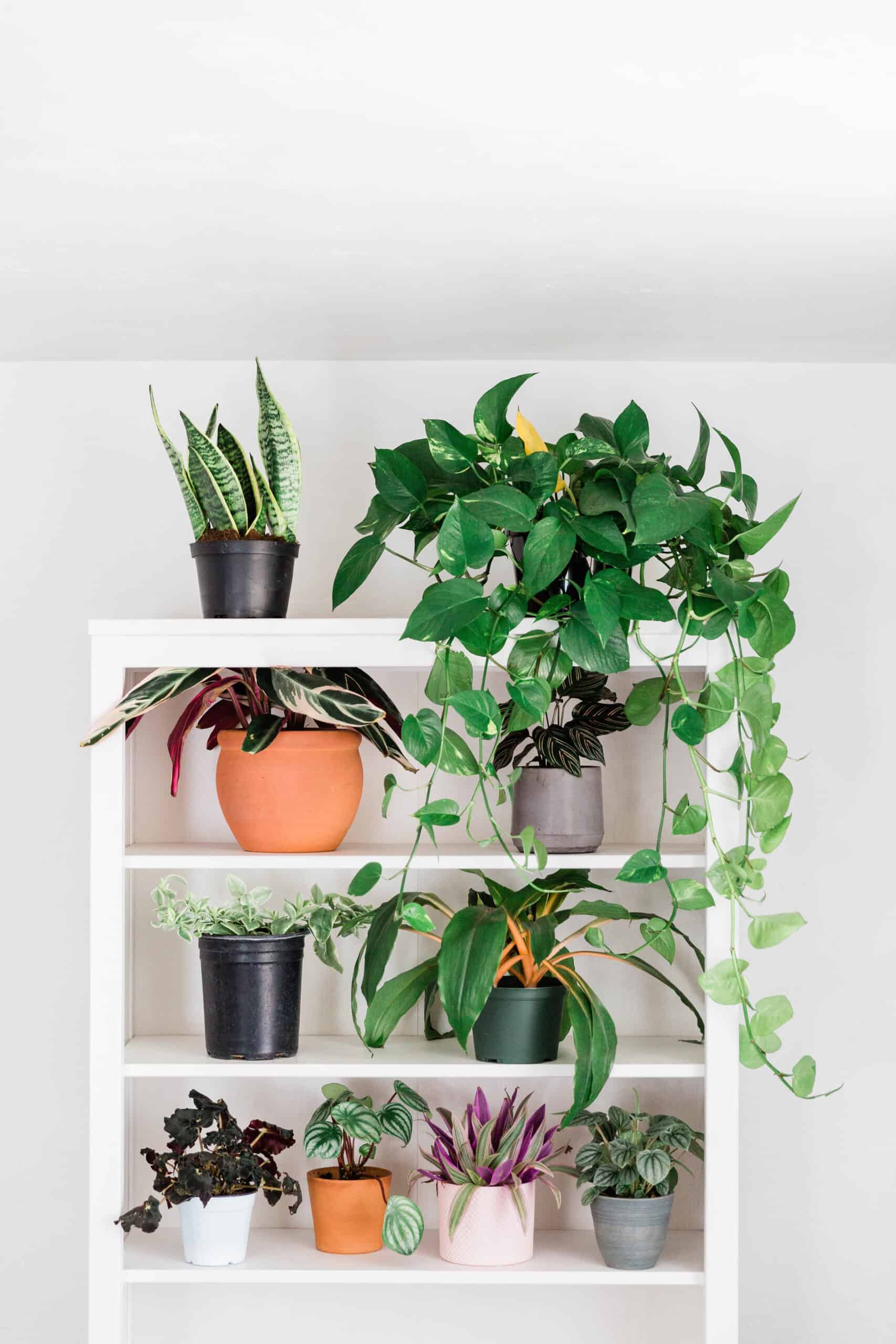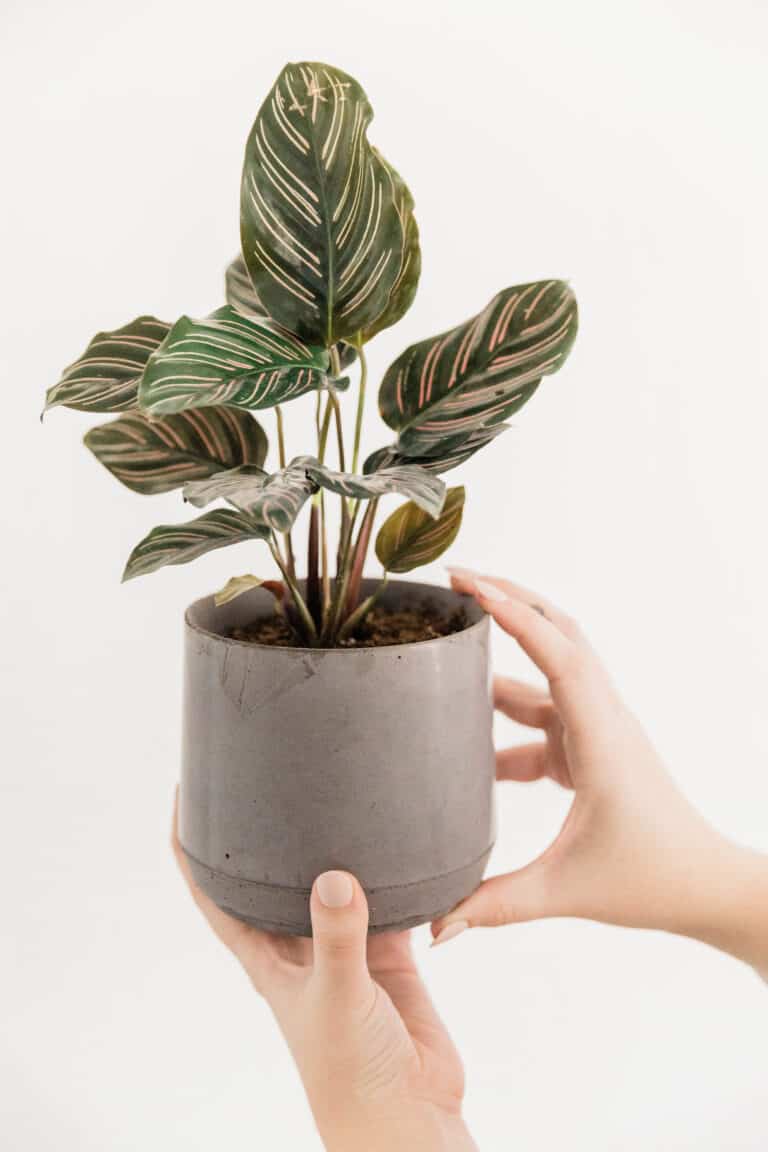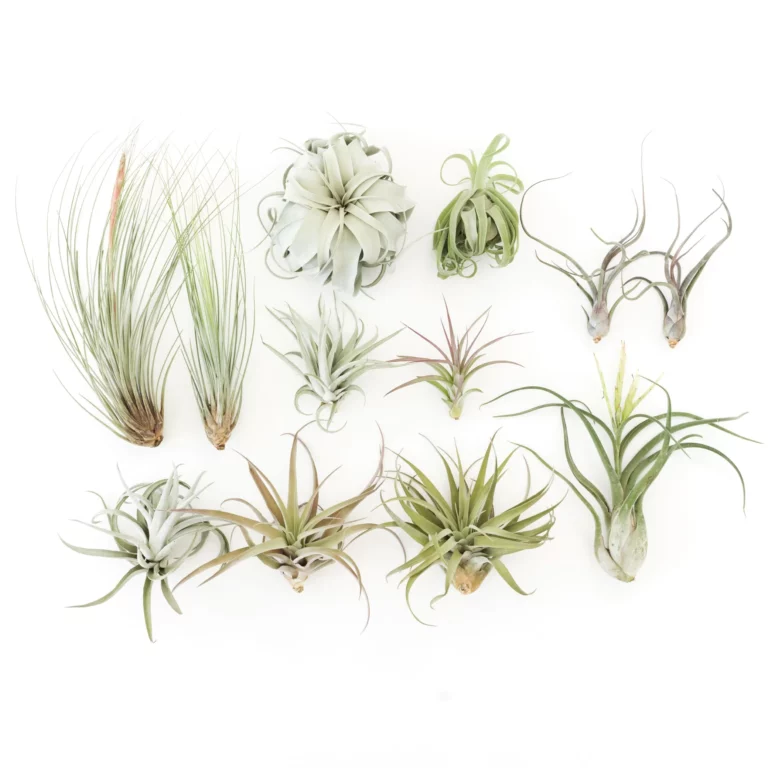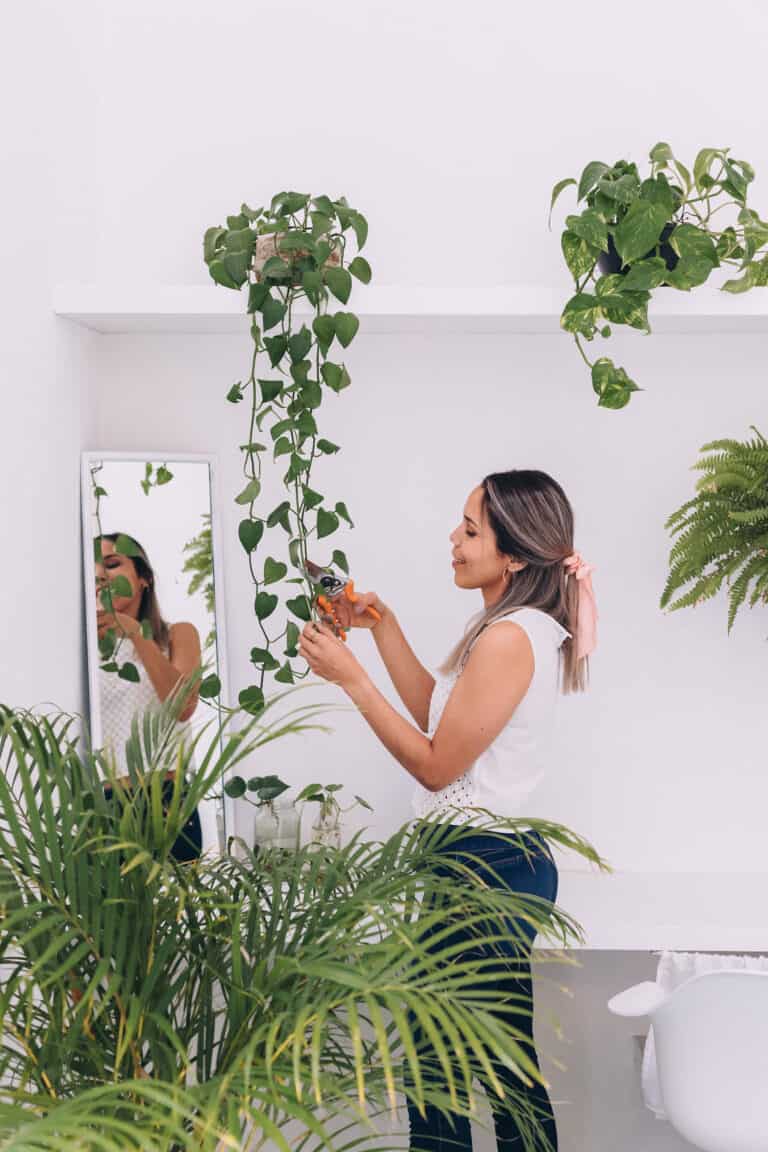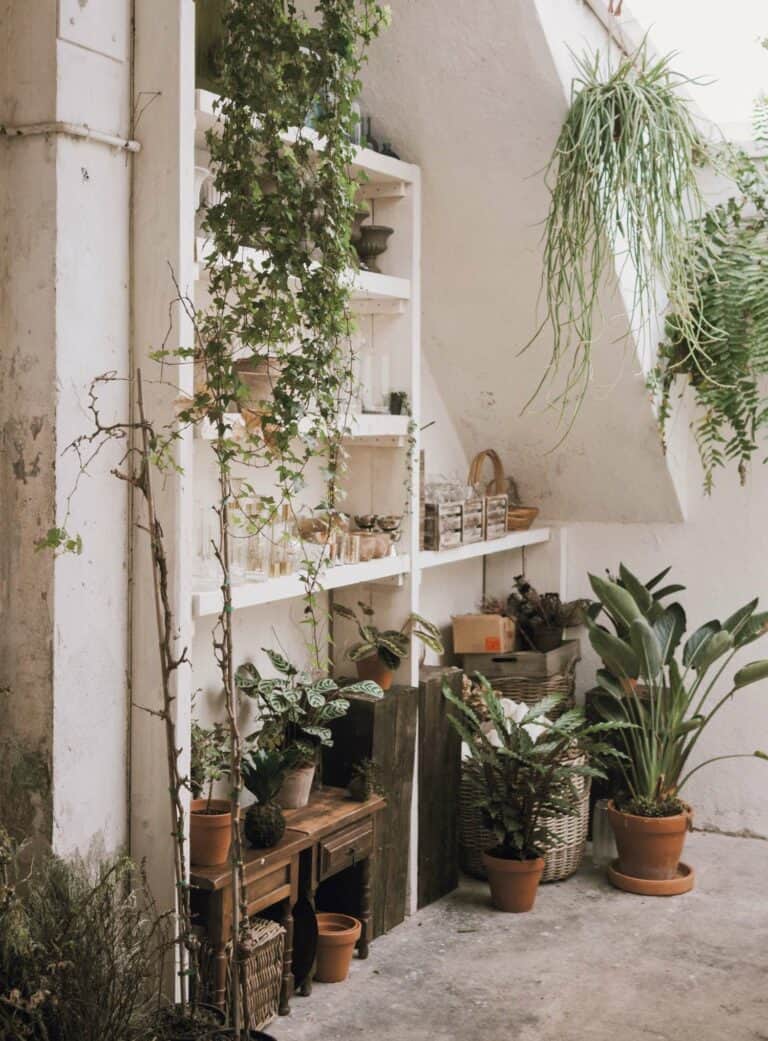Which Indoor Plants Produce the Most Oxygen? A Comprehensive Guide
Do you know that the air indoors can be ten times more polluted than the air outdoors?
Plus, with climate change grabbing headlines right and left, you may be curious about which indoor plants can be your new personal oxygen-producers
The secret lies in choosing the right indoor plants that are not just wonderfully low-maintenance but also produce the most oxygen.
Now, if you’re wondering how to pick the right one, why not spruce up our spaces and minds with a breath of fresh air using this guide?

Understanding Oxygen Production in Plants
First off, let’s talk about photosynthesis. This is how plants manage to produce that oxygen we all love.
Basically, our plants take in carbon dioxide from the air and water from the soil. Then, they bask in glorious sunlight, using the energy from those rays to transform carbon dioxide and water into glucose (plant food, yum!) and oxygen.
They keep the glucose to stay alive and kicking and release the oxygen into the air
But hold up, not all plants are created equal in this oxygen-producing game.
There are a few things that can affect how much O2 our plants dish out:
- the type of plant,
- its size, and how much light and
- nutrients it gets. So, what should you look for when picking a plant that’s gonna pump out a bunch of oxygen for ya?
Number one on the list is the mighty rate of photosynthesis. Keep an eye out for plants with a high photosynthesis rate since they’ll generally produce more oxygen.
bigger is usually better. Larger plants have more leaves and a larger surface area for photosynthesis shenanigans .
So when you’re plant shopping, go big or go home!
But wait, Remember how i mentioned plants produce oxygen during the day? Well, at night, it’s a different story; they actually consume oxygen.
That’s right; those little green tricksters breathe it all in while we’re sleeping.
What I’m getting at is that your plant’s total 24-hour oxygen output will depend on how much light it gets during daytime hours and how much it chomps down on at night.
Long story short, when you’re picking plants for max oxygen production, consider the type of plant, its size, and whether it’s getting the light and nutrients it deserves.
Factors Affecting Oxygen Production
The amount of oxygen produced by a plant is influenced by several factors. Some of these factors are:
- Light: Plants need light to produce oxygen through photosynthesis. The more light a plant receives, the more oxygen it can produce. However, too much light can damage the plant, so it’s important to find the right balance.
- Temperature: Plants have an optimal temperature range for photosynthesis and oxygen production. If the temperature is too low or too high, the plant’s growth and oxygen production can be affected.
- Humidity: Plants need a certain level of humidity to thrive. If the air is too dry, the plant can lose moisture and its oxygen production can be reduced.
- Soil quality: The quality of the soil affects a plant’s ability to absorb nutrients and water, which in turn affects its growth and oxygen production.
- Plant species: Some plant species are better at producing oxygen than others. For example, the Snake Plant (Sansevieria trifasciata) and the Spider Plant (Chlorophytum comosum) are known for their high oxygen production.
It’s important to note that while these factors can influence oxygen production, plants are still effective at producing oxygen even under less-than-optimal conditions.
Top Oxygen-Producing Indoor Plants
Here are five indoor plants that produce the most oxygen:
Areca Palm
The Areca Palm (Dypsis lutescens) is a popular houseplant that can grow up to 7 feet tall. It is known for its ability to remove toxins from the air and produce large amounts of oxygen. According to a study by NASA, the Areca Palm is one of the best air-purifying plants. It is also easy to care for and can thrive in low light conditions.
Snake Plant
The Snake Plant (Sansevieria trifasciata) is a hardy houseplant that can survive in almost any environment. It is known for its ability to remove toxins from the air and produce oxygen at night. According to a study by the University of Georgia, the Snake Plant is one of the best plants for improving indoor air quality. It is also easy to care for and can thrive in low light conditions.
Money Plant
The Money Plant (Epipremnum aureum) is a popular houseplant that is known for its ability to remove toxins from the air and produce oxygen. It is also easy to care for and can grow in almost any environment. According to a study by the University of Technology Sydney, the Money Plant is one of the best plants for removing formaldehyde from the air.
Spider Plant
The Spider Plant (Chlorophytum comosum) is a popular houseplant that is known for its ability to remove toxins from the air and produce oxygen. It is also easy to care for and can grow in almost any environment. According to a study by the University of Technology Sydney, the Spider Plant is one of the best plants for removing formaldehyde from the air.
Aloe Vera
The Aloe Vera plant (Aloe barbadensis) is known for its medicinal properties and is also a great air-purifying plant. It is easy to care for and can grow in almost any environment. According to a study by the Indian Journal of Experimental Biology, the Aloe Vera plant produces a large amount of oxygen and can remove toxins from the air.
In conclusion, these five indoor plants are some of the best oxygen-producing plants that can also improve indoor air quality. They are easy to care for and can grow in almost any environment, making them great additions to any home or office.
Benefits of Oxygen-Producing Plants
Indoor plants are not only aesthetically pleasing but also provide numerous benefits, including producing oxygen. These plants can help improve the air quality in your home by removing toxins and pollutants and releasing fresh oxygen. In this section, we will discuss the benefits of oxygen-producing plants.
Improved Air Quality
Indoor air quality can be up to five times worse than outdoor air quality. This is due to various factors, including poor ventilation, chemicals used in household products, and pollutants from outside sources. Oxygen-producing plants can help improve air quality by removing toxins and pollutants from the air. Some plants, such as the snake plant and the peace lily, are particularly effective at removing harmful chemicals like benzene and formaldehyde.
Health Benefits
In addition to improving air quality, oxygen-producing plants can also have health benefits. Studies have shown that indoor plants can help reduce stress, lower blood pressure, and improve mood. Plants can also help reduce the risk of respiratory illnesses by increasing humidity levels and reducing airborne dust.
Aesthetically Pleasing
Oxygen-producing plants come in a variety of shapes, sizes, and colors, making them a great addition to any home decor. They can add a pop of color to a room or bring a sense of calmness with their green foliage. Additionally, plants can help create a relaxing and calming environment, which can be beneficial for mental health.
Overall, oxygen-producing plants are a great addition to any indoor space. They not only provide aesthetic benefits but also help improve air quality and provide health benefits. Adding a few plants to your home can make a significant difference in your overall well-being.
Caring for Oxygen-Producing Indoor Plants
Indoor plants that produce the most oxygen are not only great for air quality but also add an aesthetic touch to your home. However, it’s essential to care for these plants properly to ensure they thrive and continue to produce oxygen. Here are some tips for caring for oxygen-producing indoor plants:
Watering
Overwatering or underwatering your plants can lead to problems such as root rot or dehydration. It’s crucial to check the soil moisture level before watering. Stick your finger about one inch into the soil, and if it feels dry, it’s time to water.
However, if the soil feels moist, wait a few more days before watering. It’s also important to use a pot with drainage holes to prevent water from accumulating at the bottom, which can cause root rot.
Lighting
Different indoor plants require different lighting conditions. Some plants, such as snake plants and ZZ plants, can tolerate low light conditions, while others like the peace lily and Boston fern thrive in bright, indirect light. Make sure to research the lighting needs of your specific plant and place it in an appropriate location in your home.
Temperature and Humidity
Most indoor plants prefer temperatures between 60-75°F (15-24°C). Keep your plants away from cold drafts or hot air vents. Humidity levels can also affect your plants, and some plants, such as the spider plant and English ivy, prefer higher humidity levels. You can increase humidity levels by placing a tray of water near your plant or using a humidifier.
Fertilizing
Indoor plants require nutrients to grow and produce oxygen. It’s essential to fertilize your plants regularly, but avoid overfertilizing, which can lead to salt buildup and damage to the roots. Use a balanced fertilizer and follow the instructions on the packaging for the correct amount and frequency of application.
By following these tips, you can ensure your oxygen-producing indoor plants thrive and continue to provide clean air for your home.

Conclusion
So, indoor plants can do wonders for our living spaces; besides making our homes IG-worthy, they’re also great at producing oxygen and improving our air quality .
Some all-star oxygen producing plants include Boston Fern, Pothos, and Chrysanthemum.
But before you go on a shopping spree and turn your home into a mini jungle, let’s talk about space and care.
We don’t want biting off more than we can chew, do we?
Here’s the deal: some plants like the Spider Plant and Snake Plant ( are really low-maintenance .
They can adapt to different conditions, which is perfect if you’re just dipping your toes into the world of plant parenthood.
But While indoor plants can be our besties in providing us with cleaner air, we shouldn’t just rely on them for all our air purification needs (I mean, they only have so many leaves).
Proper ventilation and air filters should also be part of your clean air routine.
Suffice it to say, adding plants to your home is a win-win situation (fyi, there’s no such thing as too many plants).

